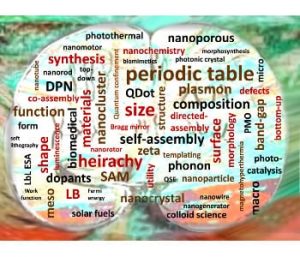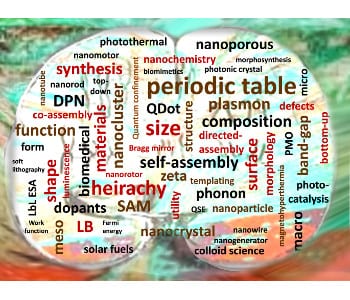By Chenxi Qian, Todd Siler, and Geoffrey A. Ozin
 The rapid development of nanomaterials science and technology nowadays calls for a multifunctional data system, namely the Nanomaterials Genome. It is designed for intelligent and convenient categorizing, organizing, sifting, sorting and integrating pertinent nano-information about the known nanomaterials, and utilizing this information to explore the unknown in scientifically and technologically innovative ways, ultimately to benefit society.
The rapid development of nanomaterials science and technology nowadays calls for a multifunctional data system, namely the Nanomaterials Genome. It is designed for intelligent and convenient categorizing, organizing, sifting, sorting and integrating pertinent nano-information about the known nanomaterials, and utilizing this information to explore the unknown in scientifically and technologically innovative ways, ultimately to benefit society.
Inspired by work on the Human Genome project, which began in 1989 together with motivation from the recent emergence of the Materials Genome project initiated in 2011 and the Nanoinformatics Roadmap 2020 instigated in 2010, we envision the development of a Nanomaterials Genome (NMG) database and possible peripherals with the most advanced data-mining tools that leverage inference engines to help create, connect and interpret patterns of nanomaterials information. The NMG would enable the realization of our intuitions, inventions and innovations to be applied to the development of next generation energy materials for solar cells, fuel cells, batteries and supercapacitors and biomedical materials for diagnostics, therapeutics and imaging, organ, skin and bone replacement and repair.

















